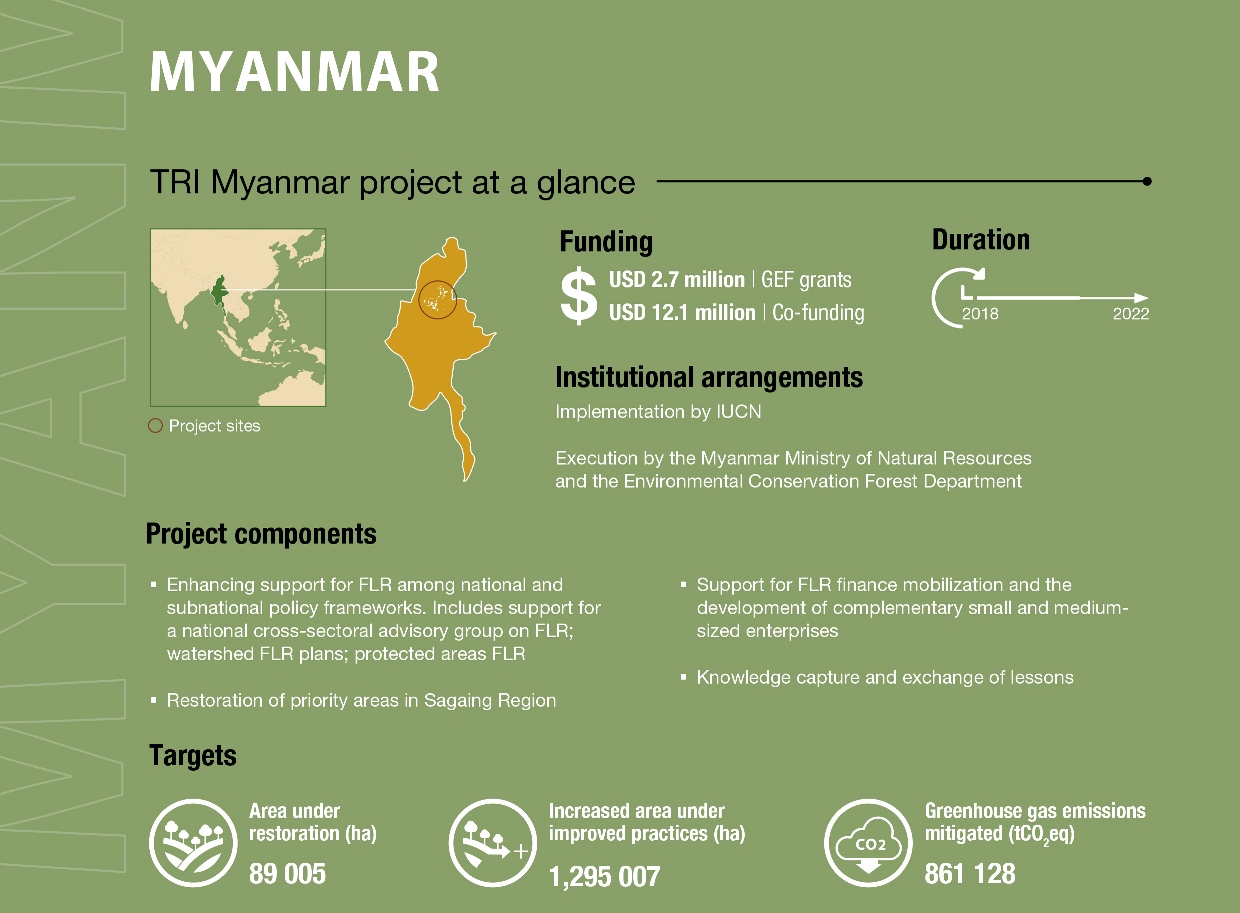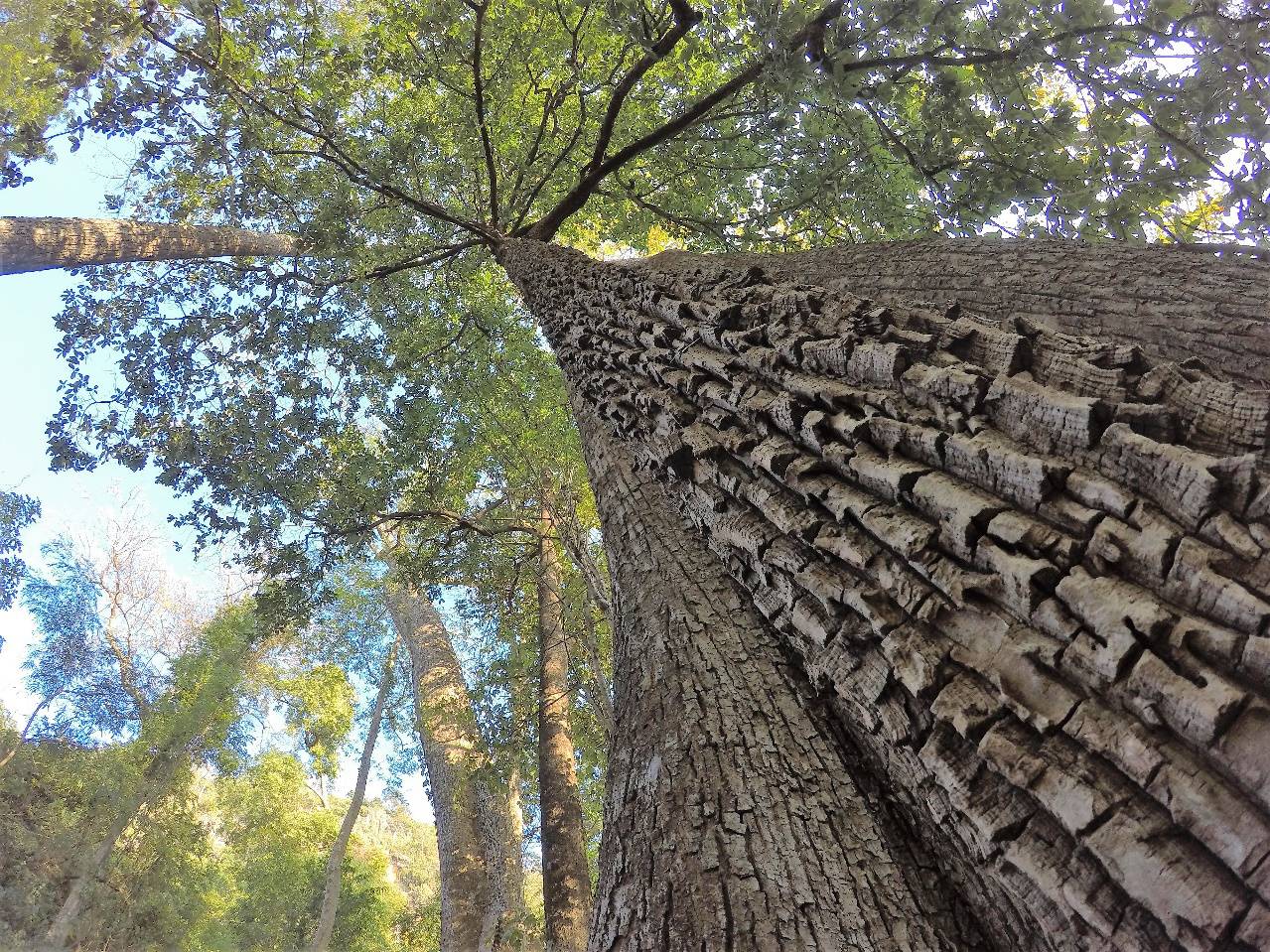The forests of Myanmar are under severe pressure. As recently as 1948 – the time of independence – forests covered 70% of Myanmar, whereas today, forests cover just 48%. Between 2010 and 2015, Myanmar lost an average of 546,000 ha of forest each year – the third highest annual deforestation rate in the world, behind Brazil and Indonesia. Principal factors driving deforestation in Myanmar include unsustainable and illegal logging, extensive conversion to agriculture, including oil palm and pulpwood plantations, and unresolved land disputes. And with conversion to a market economy and rising population growth, pressures on Myanmar’s forests are only expected to increase.
TRI’s project in Myanmar is an effort to address these challenges. Working in the Sagaing Region – the dry central part of the country that has experienced extensive deforestation and land degradation – the project is helping advance partnerships between the state forest department and local communities to restore and better manage these lands. The approach calls for clarifying land tenure; avoiding conversion to non-forest uses; supporting natural regeneration and assisted natural regeneration in heavily deforested and degraded areas; and integrating biodiversity conservation into management plans.
(Note: the Myanmar project has been suspended due to the political situation since November 2021)


